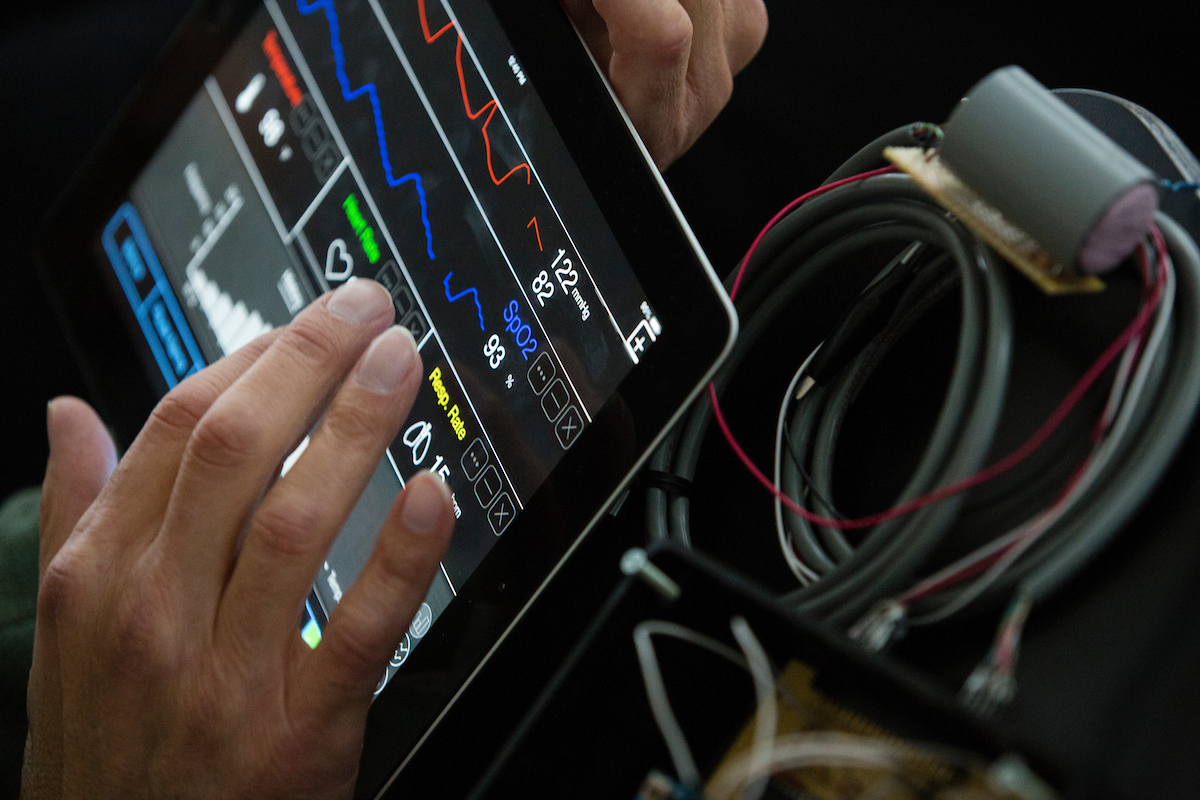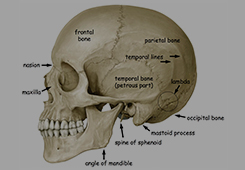Interdisciplinary Student Collaboration Yields Great Benefits
By Alicia Russell (Associate Director, CELT) with Ron Lasser (Professor, Electrical and Computer Engineering), Peggy Morris (Lecturer, Occupational Therapy) and Ming Chow (Senior Lecturer, Computer Science)

Authentic Problems
Eager to provide upper-level undergraduate and graduate engineering students with a more practical course, Ron Lasser and Ming Chow launched their Mobile Medical Devices and Apps class in Spring 2014. After taking the course, students told the instructors that although the course was excellent, the project was class-based and the student’s desired one that was more representative of the real world. And they didn’t like the final project because it was artificial; they wanted to sink their teeth into an authentic problem to solve.
Chow and Lasser decided to come up with real world problems. Initially, Lasser said, “I had to open my mind to look outside of my discipline. Of course, doing this was time consuming and worrisome. I was looking for someone I could interact with who was a natural consumer. I was planning to only interact with them in a minimal way and then go do the project.” In the end, the instructors’ involvement was far more than minimal.
Lasser proposed the idea of a collaboration to Occupational Therapy lecturer Peggy Morris, whom he’d met at a CELT program earlier in the year. She said her Occupational Therapy graduate students would benefit from exposure to other departments here at Tufts to gain some experience in inter-professional collaboration.
Uncertainty about Outcomes
Although Morris was intrigued with the idea of working with the engineers, she had to get over her concern about uncertainty. “I had to come to terms with the idea that it was okay to take a risk and not know exactly what students would learn by the end of the semester through this collaborative project,” she said. Still, she decided to take the risk, determining that for the occupational therapy students, writing functional goals, educating other professionals about conditions, and commenting on the feasibility of device prototypes in their client’s daily lives would be worthwhile outcomes for this project.
Morris, Lasser, and Chow hatched a plan to have their students work together – the engineers would design a product to help OT students’ pediatric clients.
With Morris on board, Chow and Lasser did high level planning for the project and confirmed the details of the technology needed to make this course feasible. Ming was enthusiastic about the idea – he said that students needed to learn to explain an engineering issue to a potential customer within 15 minutes, and having OT students as clients would give them real practice.
Cross-Disciplinary Problem Solving
To kick off the project, the instructors arranged for the OT and engineering students to meet together in a large classroom with presentation technology at 574 Boston Avenue to learn about each others’ disciplines. Engineering students explained what they did as engineers, and the OT students talked about their work as occupational therapists. A video of a pediatric client was shown, with time for questions and answers from everyone involved.
Students next got into three teams with the goal of identifying a problem the OT students had in working with their young clients – one that could be solved by a device, app or another product. Initially the OT’s didn’t know what their problems were – or rather what kind of problems they had that engineers could solve. But instructors Chow and Lasser had trained the engineering students to ask questions that could help their clients – in this case, the OT students – identify a problem, and then brainstorm potential solutions. This process helped the students realize the importance of taking the time to understand each other’s language.
Since the OT students’ focus was on pediatrics, the engineering and OT students thought through the difficulties the young clients had completing daily activities. For example, for one team, the problem of getting children to brush their teeth spurred the idea of finding a way to encourage and assist children with daily brushing. The engineering students asked questions such as “How can you motivate the child?” “What do you want to measure?” “How will you record and demonstrate the results?” Because they were working with children, the device they created would have to be fun and engaging to encourage the child to use it.
Toothbrush Bears and Light-up Drums
One of teams came up with the “Toothbrush Bear” – a teddy bear connected to an app that would encourage children to brush frequently and thoroughly. The app would show a happy bear when the child brushed, and a sad one when she didn’t. The app would also allow the child to select a song to play while brushing.
When using the device with clients, OT clinicians would show the children how to brush their teeth by first brushing the bear’s teeth. Children would practice on the bear, then on themselves.
To create the device, one of the students bought a teddy bear. The team removed the stuffing, inserted the electronics, including a Hall sensor, which could detect a magnetic field, and attached magnets to a toothbrush. The sensor could measure the tooth brushing activity by detecting the recording action each time the brush went back and forth. Finally, the team connected the bear to the medical app.
The engineers are still working on usability for this device.
Another team decided to work on a way to encourage a child with a traumatic brain injury to move an injured arm to gain flexibility and strength. Again thinking of what might motivate a child, this team built pressure-sensitive drums and hooked them up to an app. Lighted targets tell the child with the brain injury which drum to touch. The app reads how much force the child exerts. The app can be set up so the drums light up in different sequences to encourage the child to by giving her immediate audio and visual (animation) feedback as she touches the drum. A patent application was filed in April 2016 for the medical drum/feedback device and the software. A device like this has the potential to be marketed for home use so siblings could play, which could further motivate the child to use it.
Importance of Early Collaboration and Flexibility
To make this collaboration work, instructors Chow, Lasser and Morris needed to understand one anothers’ course outlines. Chow and Lasser needed to be aware of major OT problems so they could match Morris’s themes and frame a debate for the engineering students.
All of the instructors had to be flexible and willing to take the risk involved in any new teaching experiment. In addition to hard work, close collaboration and an understanding of one anothers’ courses, “there was a certain amount of serendipity and luck that made this collaboration possible.”
“We taught our classes at same time!” said Morris. “For our mutual class meetings, Ron booked the classroom right across the hall from mine and moved his class there. The students were able to walk across the hall for the group meetings.”
When the course is reprised, possibly for the Spring of 2018, the three instructors will plan the OT and Engineering course together from the first day. “This will yield a better understanding of the patient problem and environment,” said Lasser. “Most important, it will form the connections between our students to develop the skills to collaborate in the real-world to solve patient problems most effectively.”




